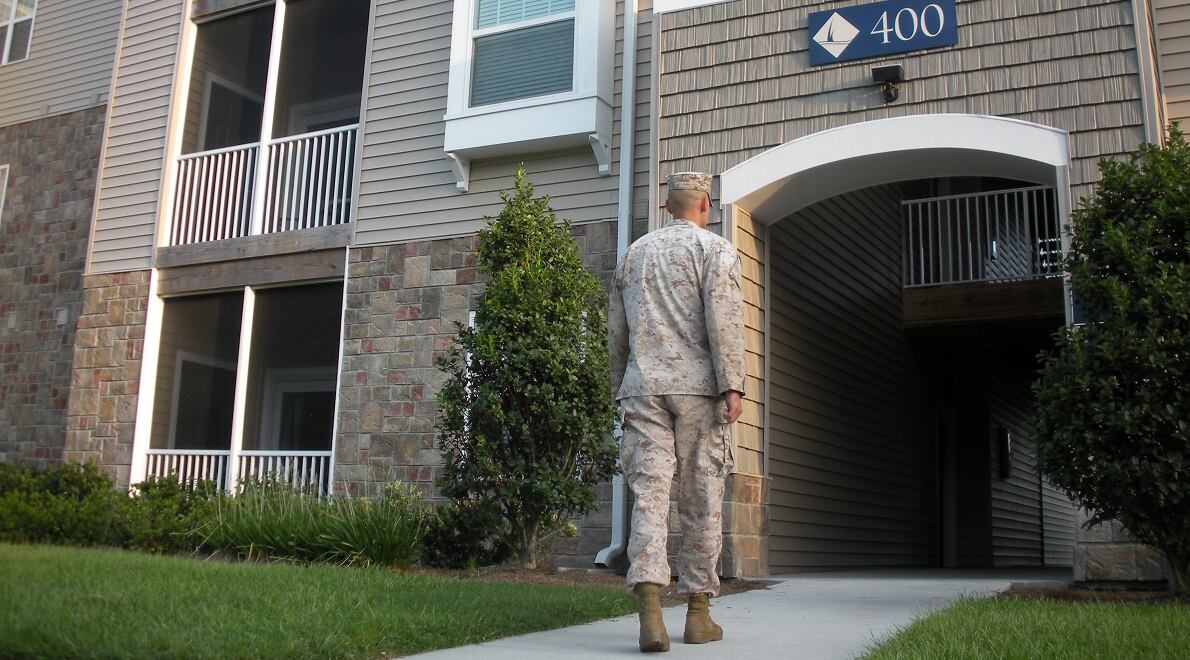Housing allowances for troops are jumping by 12.1%, on average, in 2023, defense officials announced Wednesday.
By Military Times calculations, that’s the largest year-over-year percentage jump in the Basic Allowance for Housing in at least 15 years. Many service members have been hit hard over the last few years by the increased cost of housing.
The percentage increase in BAH varies by rank, location and whether the service member has dependents. New rates take effect Jan. 1.
Service members stationed at Twentynine Palms Marine Corps Air Ground Combat Center, California, will see the biggest jump, at an average 38%, compared to Basic Allowance for Housing rates in 2022. According to information provided by DoD, an E-5 with dependents at Twentynine Palms will see an increase of $891 a month in BAH.
Next highest is the Miami/Fort Lauderdale, Florida, housing area, with a 32% increase.
Troops can look up their new BAH amount for 2023 by plugging in their rank and zip code in the DoD tool.
Of the 300 designated military housing areas, 291 will see increases in BAH; five will see decreases, and four will stay the same. Those with decreasing rates are Lake Charles, Louisiana (down by 10%); Holloman Air Force Base/Alamagordo, New Mexico (down by 4%); Vance Air Force Base/Enid, Oklahoma (down by 2%); Long Island, New York (down by 2%) and Buffalo, New York (down 1%). Troops stationed in areas where the amount of housing allowance decreases aren’t penalized; they continue to receive the same amount they received in 2022.
Areas where the BAH will stay the same are San Francisco; Erie, Pennsylvania; Memphis, Tennessee; and Bismarck, North Dakota.
Defense officials estimate that the BAH program will cost about $26.8 billion in 2023, with BAH being paid to about 1 million service members, said DoD spokesman Army Maj. Charlie Dietz.
“The significant increase in average BAH rates is reflective of the unique market conditions experienced across many locations nationwide over the past year,” he said. “While average BAH rates increased substantially, different rental markets experience different market trends, and the 2023 BAH rates reflect those geographic market condition differences.”
Effective Oct. 1, defense officials temporarily automatically increased the BAH for 28 military housing areas across the country that have been hit hard by the increasing cost of housing. Those rates expire Dec. 31, and are being replaced by the 2023 BAH. Most of those rates are unchanged, Dietz said.
RELATED

BAH rates go up or down based on rental housing cost data for various types of houses, collected each year for more than 300 military housing areas in the U.S., including Alaska and Hawaii. The process for setting the BAH rates includes a variety of data sources, such as U.S. Census Bureau survey data, Bureau of Labor Statistics Consumer Price Index, commercial subscription rental cost databases, industry-leading online rental listing websites, and input from the military services and local military installation housing offices. The BAH computations include the median current market rent and average utilities cost for the housing units.
The Government Accountability Office has reported that DoD needs to improve the way it calculates troops’ housing allowances. DoD officials are in the process of reviewing those procedures.
For service members who live in privatized housing, their rent is equal to their BAH, so their privatized housing landlords will get the extra money.
Karen has covered military families, quality of life and consumer issues for Military Times for more than 30 years, and is co-author of a chapter on media coverage of military families in the book "A Battle Plan for Supporting Military Families." She previously worked for newspapers in Guam, Norfolk, Jacksonville, Fla., and Athens, Ga.




